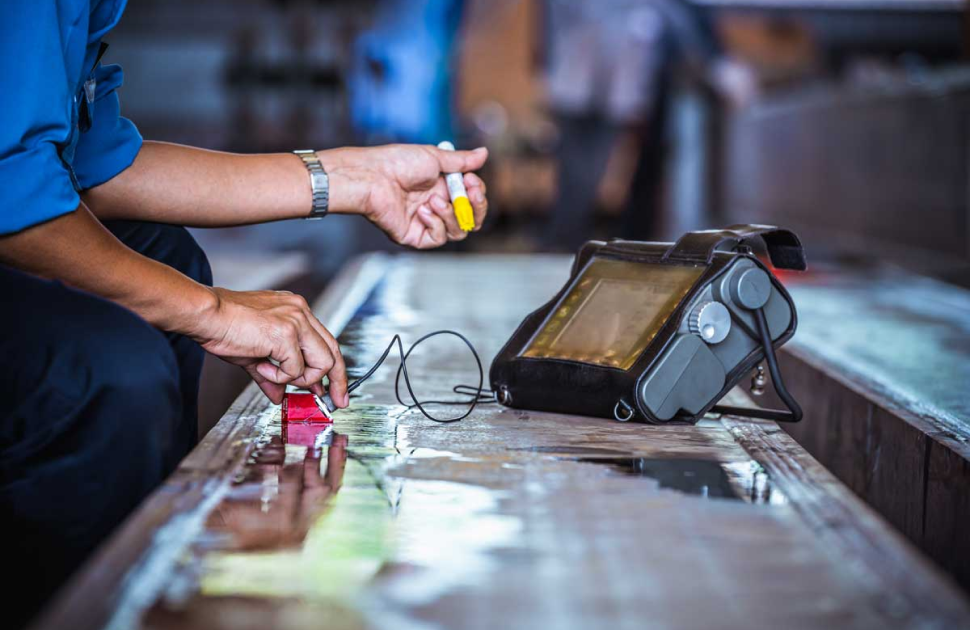Non-destructive Testing (NDT) is an essential technique that is used in a wide range of industries, including aerospace, construction, energy, manufacturing, medical, automotive, railway, oil, and gas, among others. NDT inspection plays a critical role in ensuring safety, reliability, and efficiency in these industries.
Non-destructive Testing inspection typically involves several steps that must be carefully planned and executed to obtain accurate and reliable results.
The first step is planning and preparation, which involves identifying the specific NDT method or methods that will be used, determining the specific areas or components that need to be inspected, and preparing the necessary equipment and materials.
The second step is the actual inspection process, which involves performing the chosen Non-destructive Testing method or methods on the areas or components to be tested. This may include visual inspection, Ultrasonic Testing, radiographic testing, magnetic particle testing, liquid penetrant testing, and many others.
Each method has its specific applications and advantages, and the choice of method will depend on the material, component, or system being inspected and the specific requirements of the inspection.
Once the inspection is completed, the third step involves the evaluation and interpretation of the inspection data. This step involves analyzing the data to determine the condition and integrity of the material or component being tested. This can involve interpreting images, measuring thickness or other properties, or comparing results to known standards.
It is important to note that this step requires careful attention to detail and a thorough understanding of the specific NDT method being used to ensure accurate and reliable results.

The fourth step is reporting. The results of the inspection are documented in a report that includes details of the inspection method, the condition and integrity of the material or component, and any recommendations for further action.
The report is usually provided to the relevant stakeholders, such as project managers, engineers, or maintenance personnel.
The report is a critical component of the inspection process as it provides valuable information that can be used to make informed decisions about the condition and integrity of the material or component being tested.
Finally, if any defects or issues are found during the inspection, further follow-up actions may be required. This can include repairs, replacement, monitoring, or additional testing. The specific follow-up actions will depend on the nature and severity of the defects or issues identified during the inspection.
It is important to note that Non-destructive Testing inspection should be done by certified and qualified personnel who are trained in the specific NDT method or methods being used to ensure accurate and reliable results.
The personnel should also have a thorough understanding of the specific material or component being inspected and the specific requirements of the inspection.
NDT inspection is a valuable tool that can help to ensure the safety, reliability, and efficiency of materials, components, and systems in a wide range of industries.
The inspection process typically involves several steps, including planning and preparation, inspection, evaluation and interpretation, reporting, and follow-up actions.
Each step must be carefully planned and executed to ensure accurate and reliable results. NDT inspection should be done by certified and qualified personnel who are trained in the specific NDT method or methods being used to ensure accurate and reliable results.
In conclusion, Non-destructive Testing inspection is a vital process that plays a critical role in ensuring the safety, reliability, and efficiency of materials, components, and systems in a wide range of industries.
The inspection process involves several steps that must be carefully planned and executed to obtain accurate and reliable results.
The choice of NDT method will depend on the material, component, or system being inspected and the specific requirements of the inspection.
NDT inspection should be done by certified and qualified personnel who are trained in the specific NDT method or methods being used to ensure accurate and reliable results.
(1).png)








